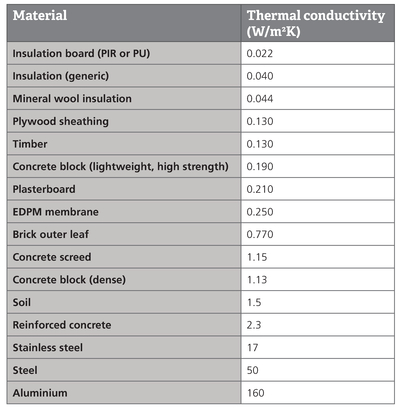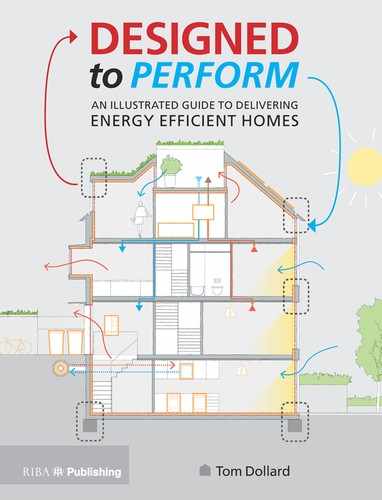Appendix 3: Thermal conductivity assumptions
The psi-values have been calculated according to BR 4979 using internal boundary conditions and are compliant with Part L of the Building Regulations. THERM 7.4.3 has been used to calculate the 2D models and TRISCO 13.0 has been used for the 3D models. Details noted with the PH icon are also suitable for Passivhaus standard, but the psi-values must be recalculated with external measurements for use in the PHPP.
The table below shows the material thermal conductivities that have been used for the calculations.
The U-values of the thermal elements have been calculated according to BR 497, section 3.1.3 and repeating thermal bridging elements have been included in the model when required. The psi-values show heat loss of each junction and provide a useful comparison and improvement to the SAP default values. The details are to be treated as good practice examples and are not accredited details.

The psi-values should not be used in SAP calculations for compliance purposes. There are a number of industry-sponsored online libraries that can be used for standard construction detailing, e.g. LABC.10 Alternatively, bespoke calculations should be carried out by a competent person using BR 497.
According to the BRE, the critical temperature factor for avoiding mould growth in dwellings is 0.75. The critical temperature factor for limiting the risk of surface condensation is 0.80.
